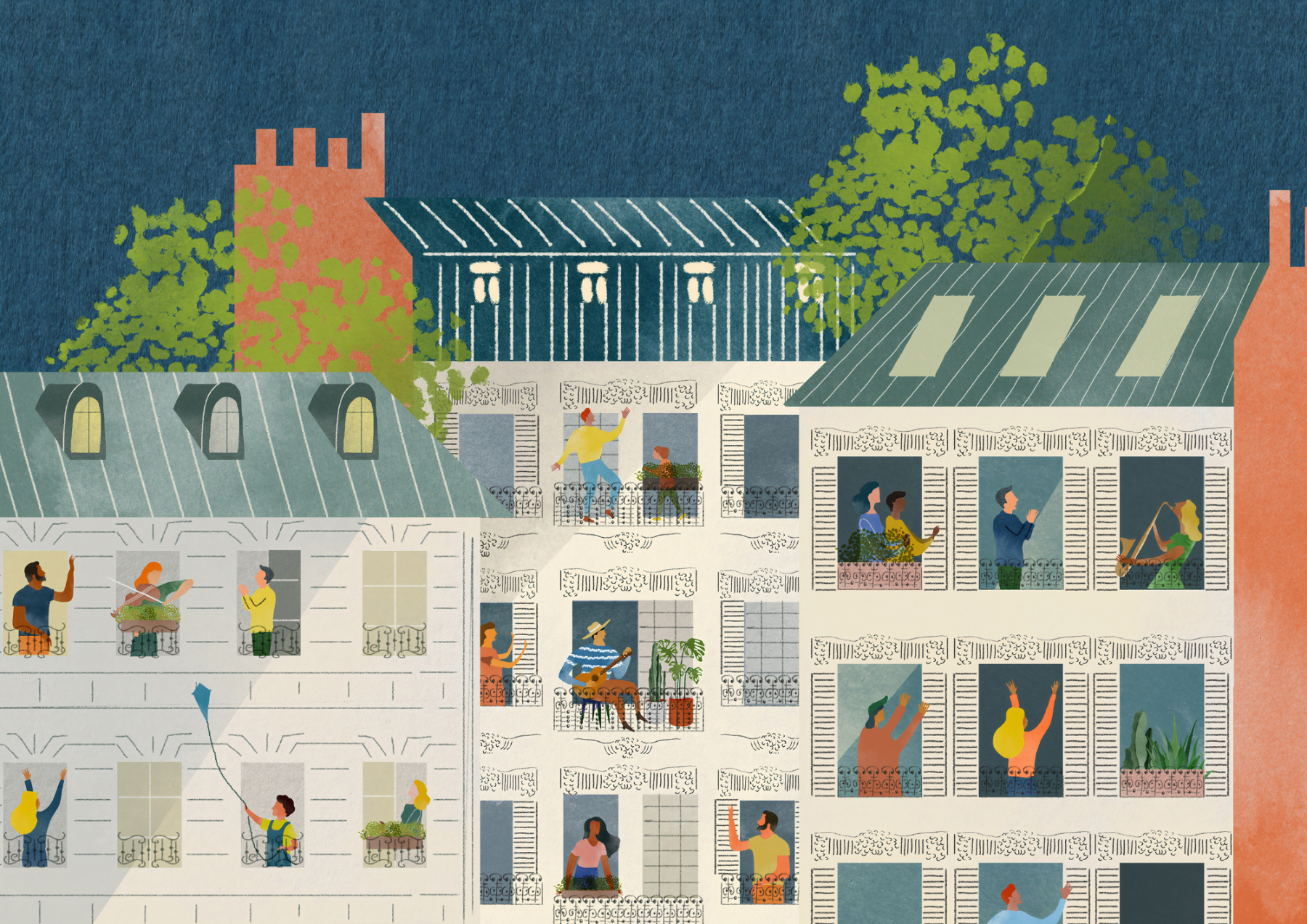Communities have evolved a whole lot in 2020. Groups that were previously focused on in-person events have gone virtual, new tools have been developed for communities to connect remotely, and people have been feeling a greater need for real, personal connections. The global COVID pandemic has changed the face of the world and the community industry has become more relevant than ever.
But what’s going to happen once the pandemic subsides? What will communities look like and how will groups come together? We don’t yet know how things will go, but this is a good time to look forward so we can begin to plan for what our communities will look like in a post-COVID world.
Here are my thoughts on how communities will interact and what they will focus on as we move towards a new way of connecting while holding onto all the lessons we’ve learned through this challenging time.
Firstly…
1. Location won’t matter
If there’s one thing we’ve learnt in 2020, it’s that we can connect with people no matter where they are in the world.
Tweet
If there’s one thing we’ve learnt in 2020, it’s that we can connect with people no matter where they are in the world. Not only that, but we can learn new things, grow together, and even form deep connections without ever meeting in person. This will heavily inform how we interact as we move forward with our communities as we will open ourselves up to people in cities, countries, and time zones that we would never have considered in the past.
But…
2. Location really will matter
Remote connection is great, but there’s still a magic to meeting in person that is a challenge to replicate online. What will change, however, is the focus of in-person meetings. Since we’ve collectively come to the realisation that talks and training content can be delivered and consumed asynchronously, there will be less need to use the high-bandwidth time of physical events to passively watch a talk where we aren’t actively engaging with others. The focus of these valuable meetings will rather be on interpersonal connection and mutual learning through active participation.
Which leads to the idea that…
3. “Hybrid communities” will be commonplace
There’s been a lot of talk about hybrid events and what they could look like as we go forward. The thinking for these is usually along the lines of events where there is a speaker at an in-person event and the talk is live-streamed with some kind of interactive element for remote viewers to engage with the content. I don’t think this is really how things will shake out though – the virtual viewers will feel like they are losing out and the accommodations made for them will make for a poorer experience for the in-person attendees.
No, instead of hybrid events, we’ll see a significant rise in hybrid communities – groups that provide online content for anyone to consume on their own time coupled with in-person meetings that offer the opportunity for exploring the content in greater depth and building deeper personal connections. The hybrid nature of these communities won’t be tied to individual events but will be a part of the DNA of the groups with equal focus placed on engaging remotely, as well as in person.
Hybrid communities will use their online spaces to facilitate real interactions that are valuable on their own regardless of whether an individual attends in-person events as well.
Tweet
You may say that we already have communities like this with many groups including an online element in their activities, like a Slack workspace for example, but these online aspects are almost always secondary in importance and are frequently only a means to facilitate easier announcements. Hybrid communities will use their online spaces to facilitate real interactions that are valuable on their own regardless of whether an individual attends in-person events as well. Online spaces will shift from being secondary in nature to being a key element in the way a community builds connections.
With communities working in an online/offline hybrid model, I see communities discovering that…
4. Content will be focused on training
Content that is intended to train or educate certainly isn’t new for community groups, but something I’ve noticed during 2020 is that more community leaders have been discovering the value in providing practical, skills-based training for their members (we’ve certainly been doing this in the WordPress community). I see this trend continuing into 2021 and beyond, where community content will be centred around learning practical skills, with the in-person meetings building on those skills with deeper discussions that facilitate mutual learning.
As a result…
5. Content will be focused on niche groups
With training becoming a larger focus, communities will need to have smaller sub-groups in order for the training material to be more effective and skills-focused. Community leaders will have to take care that they don’t permanently split their community up into these smaller groups, which they can accomplish by providing content that allows people to come together across different skillsets. For example, a software development community can run training on different programming languages, as well as development practices that apply across all languages – that way people will be able to connect with different groups of people depending on what they’re wanting to learn. This will allow people to connect more intimately because they can do so in groups of people with which they share experiences and can immediately connect from their common ground.
The upshot of this is…
6. More people will get involved in contributing to their communities
With content being focused on practical skills and being done in smaller groups, more people will feel like they have the ability to contribute to the growth of their communities. They will find that their skills matter and they have value and knowledge they can impart to others in their group. Additionally, and maybe this is just the optimistic community manager in me talking, they will come on board with helping to bring the community together – if in-person meetings are focused on discussion around the online content, then organising those get-togethers will have a much lower barrier to entry.
A side-effect of more people getting involved is that community leaders put more work into diversity and inclusion initiatives in an effort to make their content more relevant to more people, as well as to ensure they feature a wide range of topics. For some, this will be done out of pure necessity, but others will see it as the opportunity they’ve been waiting for to motivate contributors from under-represented groups to get involved in their community. No matter the motivation, this will be a huge step forward that will only pay large dividends as time goes on.
So those are my thoughts on what building community will look like beyond the global COVID pandemic – communities will migrate to a hybrid online/offline model, where they will focus on providing valuable training and deep discussions with a more diverse set of people getting involved in making it all work. Regardless of what happens in the end, I hope that we learn from the changes we’ve gone through this year, and we don’t simply go back to what we were doing before.
What do you think of these predictions? Do they sound reasonable? Do they resonate with where you see your community going?





Leave a Reply